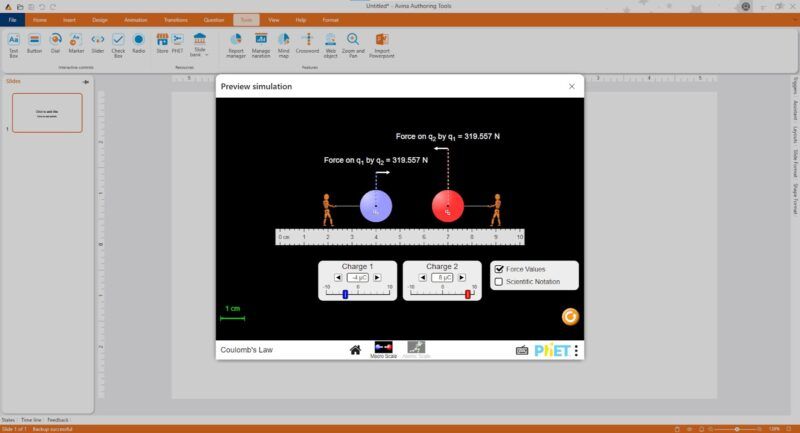Find The Perfect STEM Authoring Tool In 5 Steps
Forget generic eLearning authoring tools. STEM education demands a different breed. It's an immersive dance between science, technology, engineering, and math, where dry textbooks morph into interactive galaxies and equations explode into living graphs. Choosing the right authoring tool for this dynamic world isn't a one-size-fits-all task. But fear not, intrepid STEM educators, for we've distilled the essentials into 5 key factors to guide you on your quest for the perfect tools.
5 Must-Have STEM Authoring Tool Features
Authoring Tools Should Have STEM-Specific Features
STEM education is an interdisciplinary approach to the learning process, promoting practical skills and aiming to solve practical problems. In STEM education, students apply knowledge and skills in the fields of Science, Technology, Engineering, and Mathematics in specific contexts to comprehensively improve their abilities. Therefore, the authoring tool needs to ensure full STEM-specific features in those fields:
- Equation editor
This one's a must-have! Because mathematics serves as a fundamental building block for all other areas within the field of STEM. Look for a tool with an intuitive and powerful equation editor that handles complex formulas, graphs, and calculations with ease. Think scientific calculator on steroids!
- Diagram and chart creation
From intricate cell diagrams to mind-blowing galaxy models, STEM teachers need a tool that facilitates the creation of stunning and informative visuals. Because students often tend to be more interested in a lecture with lots of graphics than a lot of text. Drag-and-drop functionality and customization options are your friends here.
- Interactive elements
Spark your students' curiosity with interactive elements like quizzes, simulations, and virtual labs. Scientists have proven that these interactive activities help learners understand more deeply and remember longer than when testing their knowledge with exams. Choose a tool that lets you build these engaging activities without needing a Ph.D. in coding.
- Curriculum alignment
Ensure your content aligns with the specific curriculum standards relevant to your students. Some tools even offer prebuilt activities and resources geared towards specific subjects and grade levels. This helps personalize students' learning experiences, improving the quality of STEM education.
- Virtual laboratory
Bring the outside world into your classroom! Opt for a tool that allows you to incorporate real-world scientific data and even connect with external tools and software for a truly immersive learning experience. This stimulates learners' thinking and ability to relate to reality, avoiding boredom when only absorbing dry knowledge.

PhET interactive simulations feature in a virtual laboratory.
Ease Of Use For STEM Content Creation
A friendly user interface is one of the key factors that must be considered when choosing an authoring tool for STEM education. The tool should be well-organized, with clear menus and buttons that are easy to find and understand to help users save time. A clean and uncluttered workspace is key for beginners to focus on creating, not struggling with the interface.
Besides, the tool needs to have media integration as an effective assistant for STEM teachers. STEM education promotes practical thinking for deep understanding and long-term memory, so STEM teachers often use images, videos, and audio clips to explain complex concepts. The tool should make it easy to import and embed various media types.
Tutorials And Documentation
Good documentation and tutorials can be invaluable. Approaching a new support tool always takes time to get used to and practice. Teachers need proper training and support to effectively use authoring tools. Look for tools with readily available tutorials, resources, and ongoing support options. Think of it as having a helpful instruction manual to guide you through every step.
Diverse templates and themes make the lesson creation process easy and quick. Having a library of ready-made templates and themes can save you time and effort, especially when you're starting out. It's like having a set of predesigned blueprints, and you just need to add or edit content and description tools to suit your personal project based on the available design. Choose a tool that has diverse templates and themes as the first step on the journey to creating an impressive lesson for STEM education.
Free Trial And Demo
Consider the cost of the tool, comparing it to the features and benefits it offers to meet your specific needs. A good tool is not equal to the right tool, and knowing whether a tool is truly suitable for your learning goals requires trial and demo time. An authoring tool with a free trial and demo is a great choice to do just that. The quality of an authoring tool will also be tested during the trial.
Community Support
The world of technology is always complex and constantly changing, so STEM teachers may encounter many difficulties in using authoring tools for STEM content creation. A strong community of users and developers can provide helpful advice and support if you run into any problems. Look for a tool offering readily available tutorials, resources, and ongoing support options to help you master its features and unleash your full teaching potential.
Fully meeting the 5 factors mentioned above, with diverse features suitable for STEM education—a friendly interface, ease of use, good documentation and tutorials, free trial and demo, and a strong community of users and developers—Avina Authoring Tools will be a perfect choice for STEM teachers on their journey to reach the pinnacle of STEM education.
Conclusion
A suitable authoring tool is a powerful assistant for STEM teachers, helping them optimize knowledge distribution and animate lessons to stimulate creative thinking and learner participation. With the key factors mentioned in this article, hopefully you can find a suitable authoring tool to achieve your goal of effective, long-term STEM education.









